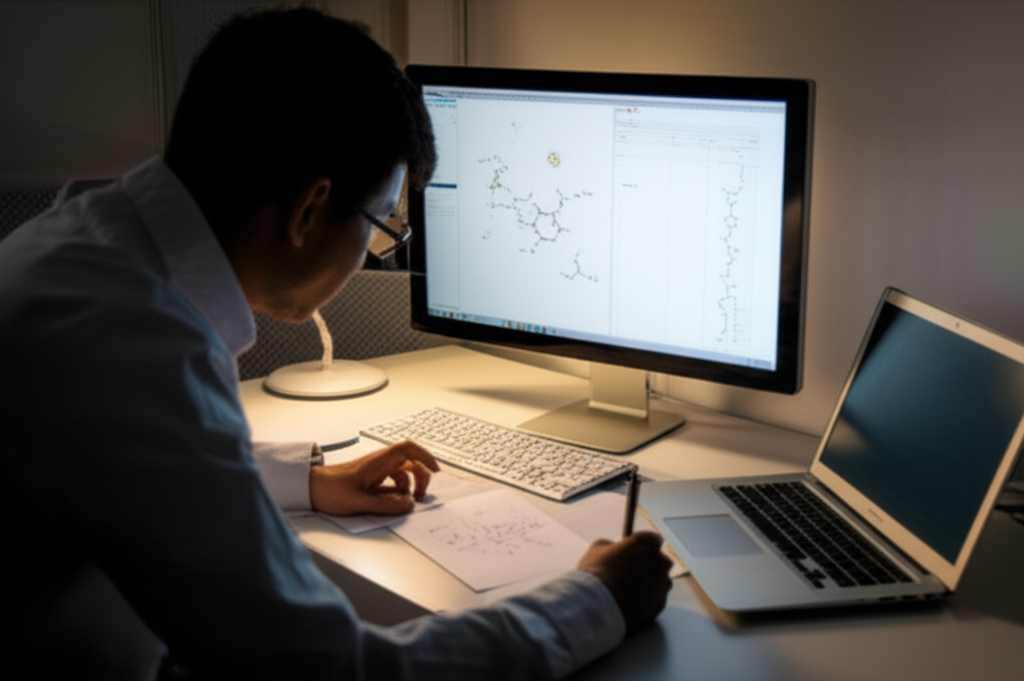Chemical manufacturers have developed a significantly enhanced and more sustainable synthesis route for producing 2-propoxyethyl chloride, a vital intermediate compound indispensable in the production of the widely used herbicide pretilachlor. Pretilachlor is renowned for its low toxicity, broad-spectrum effectiveness, and selectivity, especially crucial in the cultivation of rice, meeting substantial global market demand.

Existing methods for manufacturing 2-propoxyethyl chloride, primarily relying on the chlorination of ethylene glycol mono-n-propyl ether, faced persistent challenges impeding efficiency and safety. While earlier approaches utilized thionyl chloride (SOCl₂) or alternatives like triphosgene as chlorinating agents, they suffered from drawbacks including excessive or costly solvent use, complicated multi-step purification (like distillation), significant wastewater generation, high energy consumption, and variable product quality. This resulted in modest yields, elevated costs, environmental impact, and safety concerns hindering broad industrial scalability.
The newly detailed process addresses these limitations by employing a more sophisticated catalytic system and optimized reaction control. The method utilizes readily available ethylene glycol mono-n-propyl ether and thionyl chloride (SOCl₂), but introduces a binary catalyst composition—either pyridine combined with N,N-dimethylformamide (DMF) or pyridine combined with dimethylamine hydrochloride. Crucially, the catalyst ratios are meticulously controlled (pyridine to co-catalyst molar ratio of 1:1.5–2.5), with pyridine comprising only 0.1% to 0.5% of the ether's mass. The ether to SOCl₂ molar ratio is maintained at 1:1.1–1.2, and high-purity thionyl chloride (>98%) with low sulfuryl chloride (SO₂Cl₂) content (≤0.5%) is stipulated.
The synthesis involves a precisely staged thermal protocol. The reaction mixture is warmed to 35–45°C before initiating the carefully controlled slow addition of thionyl chloride. Throughout this addition, the reaction temperature is tightly held between 50°C and 70°C by regulating the drip rate, leveraging the reaction's inherent exothermic nature while preventing runaway. This critical step generates sulfur dioxide (SO₂) and hydrogen chloride (HCl), monitored via gas evolution. Once SOCl₂ addition is complete, the temperature is gradually raised to 90–100°C, based on gas release rates, until gas evolution ceases. The mixture is then held at this temperature for 2-4 hours to ensure reaction completion.
The resulting crude product is subsequently cooled to 30–50°C. Instead of solvent extraction or energy-intensive distillation, the process innovatively employs direct addition of a solid alkali, such as sodium hydroxide (NaOH) or potassium hydroxide (KOH). This solid agent effectively neutralizes any excess SOCl₂ and acidic byproducts efficiently and conveniently. The final step is straightforward filtration, directly yielding the high-purity 2-propoxyethyl chloride product without generating aqueous waste streams.
Benchmark results across multiple process examples showcase the dramatic improvements. Product purity consistently exceeds 99.35% (up to 99.5%), while yields surpass 98.6% (reaching up to 98.9% and 98.74%). Beyond superior purity and efficiency, the primary benefits include elimination of solvent usage, complete avoidance of aqueous wastewater, simplified operational procedures achieved by replacing distillation with solid-liquid treatment, substantial energy savings due to lower processing temperatures, reliable and stable product quality, utilization of cost-effective, widely accessible catalysts, and inherent scalability for industrial production. This optimized method represents a significant advancement for the dependable, economical, and environmentally conscious manufacture of this essential agrochemical building block.
Manufacturing Facilities






Professional Export Experience
to Global Customers

1. 20 years of R&D, manufacturing and sales experience, serving customers in 60 countries and regions around the world;
2. Own R&D laboratory, pilot platform and large-scale production workshop, which can meet the audit requirements of global customers;
3. We can satisfy customers' perfect transition from small scale lab requirements (gram level) to commercialization requirements (hundred tons level).
A: We don't have Minimum Order Quantity, exact quantity should be provided before quotation for us to calculate the exact cost.
A: We don't provide free samples due to lots of request and expensive international courier's cost, we can deduct the sample charge after commercial order placed.
A: Our payment terms: Small or sample order: T/T IN ADVANCE. Commercial order: First order should be by T/T IN ADVANCE or L/C at sight, and following orders T/T 30~90days is acceptable subject to approval of credit application.